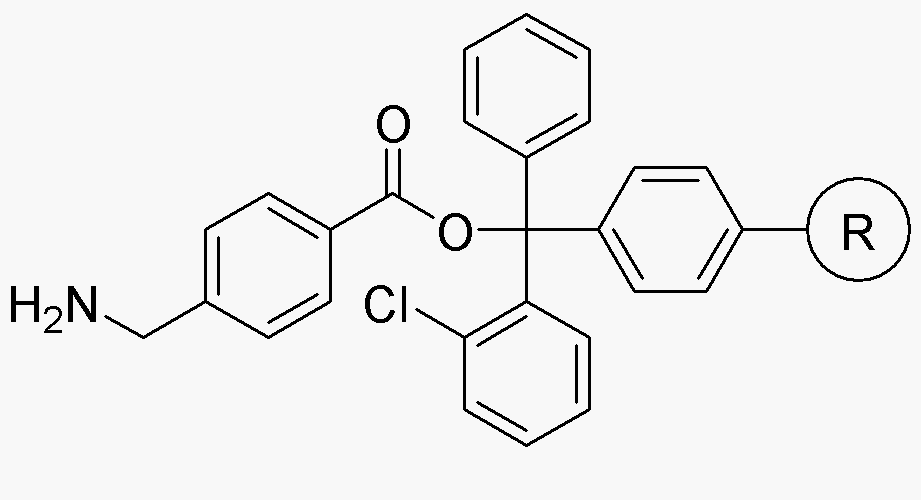4-Amb-2-chlorotrityl resin is widely utilized in research focused on:
- Peptide Synthesis: This resin serves as a solid support for the synthesis of peptides, allowing for efficient coupling reactions and easy cleavage of the final product.
- Drug Discovery: It is used in combinatorial chemistry to create diverse libraries of compounds, facilitating the identification of potential drug candidates.
- Bioconjugation: The resin can be employed to attach biomolecules, such as proteins or nucleic acids, to surfaces or other molecules, enhancing the development of biosensors and targeted therapies.
- Analytical Chemistry: It is useful in the purification and isolation of specific compounds, improving the accuracy of analytical methods like HPLC.
- Material Science: The resin can be incorporated into polymeric materials, providing unique properties for applications in coatings, adhesives, and other advanced materials.
General Information
Properties
Safety and Regulations
Applications
4-Amb-2-chlorotrityl resin is widely utilized in research focused on:
- Peptide Synthesis: This resin serves as a solid support for the synthesis of peptides, allowing for efficient coupling reactions and easy cleavage of the final product.
- Drug Discovery: It is used in combinatorial chemistry to create diverse libraries of compounds, facilitating the identification of potential drug candidates.
- Bioconjugation: The resin can be employed to attach biomolecules, such as proteins or nucleic acids, to surfaces or other molecules, enhancing the development of biosensors and targeted therapies.
- Analytical Chemistry: It is useful in the purification and isolation of specific compounds, improving the accuracy of analytical methods like HPLC.
- Material Science: The resin can be incorporated into polymeric materials, providing unique properties for applications in coatings, adhesives, and other advanced materials.
Documents
Safety Data Sheets (SDS)
The SDS provides comprehensive safety information on handling, storage, and disposal of the product.
Product Specification (PS)
The PS provides a comprehensive breakdown of the product’s properties, including chemical composition, physical state, purity, and storage requirements. It also details acceptable quality ranges and the product's intended applications.
Certificates of Analysis (COA)
Search for Certificates of Analysis (COA) by entering the products Lot Number. Lot and Batch Numbers can be found on a product’s label following the words ‘Lot’ or ‘Batch’.
*Catalog Number
*Lot Number
Certificates Of Origin (COO)
This COO confirms the country where the product was manufactured, and also details the materials and components used in it and whether it is derived from natural, synthetic, or other specific sources. This certificate may be required for customs, trade, and regulatory compliance.
*Catalog Number
*Lot Number
Safety Data Sheets (SDS)
The SDS provides comprehensive safety information on handling, storage, and disposal of the product.
DownloadProduct Specification (PS)
The PS provides a comprehensive breakdown of the product’s properties, including chemical composition, physical state, purity, and storage requirements. It also details acceptable quality ranges and the product's intended applications.
DownloadCertificates of Analysis (COA)
Search for Certificates of Analysis (COA) by entering the products Lot Number. Lot and Batch Numbers can be found on a product’s label following the words ‘Lot’ or ‘Batch’.
*Catalog Number
*Lot Number
Certificates Of Origin (COO)
This COO confirms the country where the product was manufactured, and also details the materials and components used in it and whether it is derived from natural, synthetic, or other specific sources. This certificate may be required for customs, trade, and regulatory compliance.


